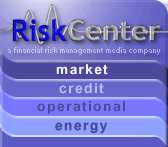US Weather Commentary
Location: New York
Author:
Michael Schlacter
Date: Thursday, December 14, 2006
Now in a Mild Phase (along with most of the Nation), the Northeast is dealing with the "weather schizophrenia" that characterizes regimes that don't yet have Blocking but also only have a moderate-El Niño.
Northeast:
Now in a Mild Phase (along with most of the Nation), the Northeast is dealing with the "weather schizophrenia" that characterizes regimes that don't yet have Blocking but also only have a moderate-El Niño. This 10 days on, 10 days off cycle, is very reminiscent of the patterns from 2004-2005 Season, one of this year's climate analogs. The next wave of Polar Air into the contiguous U.S. is already on the horizon for later next week, entering into the North-Central corridor (as is usually the case). But it should be reminded that such waves diving in West of the Mississippi typically trigger a "See-Saw" reaction, with southerly advection pushing very mild air up across the East, days before any colder air filters to the Atlantic.
~ Our Winter Season Forecast (made in July): Above-Normal Heating Degree Days [December-March]; excess Snow & Ice Storms. Site-Specific case-studies: <http://www.weather2000.com/fcst_discussion.html>
Southeast:
After dropping to consecutive low temperatures of 23°F and 21°F over the weekend, TallahasseeFL is already enjoying temperatures surging into the 70's this week. A presently neutralizing PNA pattern, ample sunshine and ridging subsidence, are helping to bring about this pleasant turn-around for the entire Southeast. But because the deep Southeast (mostly Florida and nearby) continues to dry out at the surface, we continue to warn that this will pose a big concern for hard freezes right to the Gulf coastline and deep into Florida this Winter.
~ Our Winter Season Forecast (made in July): Above-Normal Heating Degree Days [December-March]; excess clouds, precipitation; anomalous hard-freeze events (late 2006). Site-Specific case-studies: <http://www.weather2000.com/fcst_discussion.html>
North-Central:
The most dramatic temperature anomaly contrasts are expectedly occurring across the Central corridor of the Nation. After ChicagoIL experienced a shocking 4 days below 9°F, they now will see several afternoons cracking 50°F. Perhaps the "Plains-Swings" are most dramatically illustrated when ScottsbluffNE went from a morning low of 14°F to an afternoon high of 62°F....on back-to-back days! Sizeable anomalies (upwards of +15°F) are on tap for the coming week, but the next tongue of Polar Air could crack the U.S.-Canadian border by next Wednesday/Thursday.
Our Winter Season Forecast (made in July): Above-Normal Heating Degree Days and Lake-Effect events [East of Mississippi River]; Below-Normal Heating Degree Days; reduced precipitation [West of Mississippi River]. Site-Specific case-studies: <http://www.weather2000.com/fcst_discussion.html>
South-Central:
Sunny skies, ridging to the North and dry ground are assisting the region to rebound nicely, such as Dallas consistently reaching the 70's this week, and very pleasant weather in store for the region for days thereafter. The aforementioned 'oscillations' for this part of the Nation will essentially translate into mostly sunny/dry/warm days with some occasional cloudy/damp/cooler days thrown in. Any substantial cold anomalies will not be experienced through the medium-term until the WPO/EPO patterns funnel Canadian air due-South, or abundant moisture is funneled in from the Pacific.
Our Winter Season Forecast (made in July): Seasonable Heating Degree Days; excess clouds, precipitation; anomalous hard-freeze events (late 2006). Site-Specific case-studies: <http://www.weather2000.com/fcst_discussion.html>
Northwest:
One of the few areas that will feature some cold temperatures during this National Mild Phase, the Northwest U.S. will contend with normal Wet Season storminess near the Coast, but also some hefty Rockies/Interior snows across Idaho, Montana, Wyoming and Utah. Some powerful coastal gales can also be expected over the next week or so, until the pressure gradient pattern breaks down.
Our Winter Season Forecast (made in July): Below-Normal Heating Degree Days; Below-Normal Precipitation (December-March); Localized cold snaps (particularly pre-December). Site-Specific case-studies: <http://www.weather2000.com /fcst_discussion.html>
Southwest:
The sunny, warm & dry honeymoon has come to an abrupt end for the Southwest as Northern/Central California and Nevada are now bracing for strong coastal storms and mountain snows. A classic foot-print of even weak El Niño events, cloud-cover and precipitation is also being carried into the desert Southwest and southern Rockies. Interior/Desert hubs most reliant on sunshine and most vulnerable to moisture impacts on temperatures, will correspondingly witness some of the greatest negative departures during this forecast period.
Our Winter Season Forecast (made in July): Seasonable Heating Degree Days; excess clouds, precipitation (potential 'Pineapple Express' flooding).
Site-Specific case-studies: <http://www.weather2000.com/fcst_discussion.html>

To subscribe or visit go to: http://www.riskcenter.com